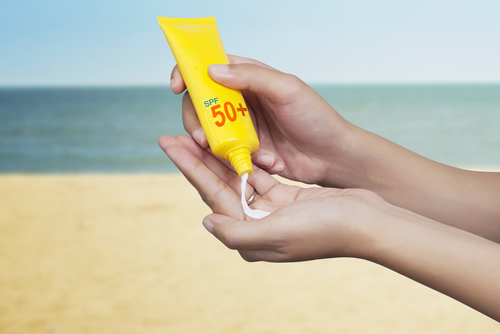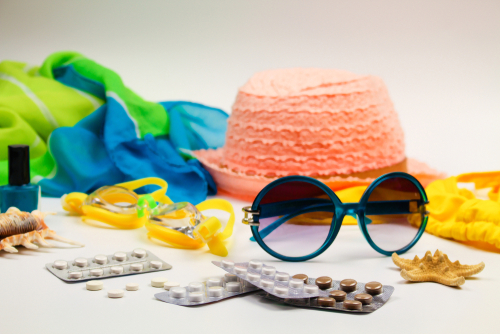
Now that summer is officially here, you may be tempted to hit the pool, beach or a patio to soak up some of that summer sun. Before you do though, it’s important to make sure you’re protected from the sun’s harmful rays. In the video below, Patient Care Pharmacist Mike Athanassakis shares some helpful tips for sun safety and care, including why tanning really isn’t good for you, and how much sunscreen you should be applying.
Sun Safety Tips to Follow
Everyone needs to be proactive about protecting themselves from sun damage, by wearing sun-shielding clothing and sunglasses in addition to being cautious about the length of time spent in the sun, with frequent reapplications of sunscreen.
If your sunscreen is a cream, lotion, or gel, use at least 2 tablespoons of product. Regardless of what type you use, even a stick or a spray, make sure you apply sunscreen evenly to all areas of exposed skin. And apply a lip balm with sunscreen on your lips, too. Sunscreen naturally rubs off through perspiration and activity, so reapply at least every 3 to 4 hours, and after 40 minutes if you’ve been in the water.
In addition, try to stay out of the sun between 11am and 3pm. The UV index in Canada can be 3 or higher during those times – the higher the index, the higher the risk of sun damage.
While applying sunscreen and staying out of the sun during peak times is a good start, there are several factors that still may be keeping you from adequately protecting yourself from severe sunburns or rashes, including sun-sensitizing medications, and inferior sunscreen products.
Misleading High SPF Values

It’s not enough to simply be applying sunscreen. You should consider the efficacy of the sunscreen products you choose.
Two-thirds of sunscreen products offer inferior protection or contain worrisome ingredients, according to researchers at the Environmental Working Group (EWG). Their research found that claims of high SPF values are on the rise and can mislead people into thinking they are entirely protected from sunburns and long-term skin damage.
Use a sunscreen with an SPF of 30 or higher. However, don’t let a very high SPF value fool you – the SPF value on product labels only indicates the level of UVB protection, so it’s critical that you also look for the label ‘broad spectrum’. That will ensure you are protected from both harmful UVA and UVB rays. And look for the label ‘water resistant’.
Sunscreens with broad spectrum protection help prevent sunburns which can result from ultraviolet B rays, as well as shield the skin from possible melanoma and skin ageing which can result from ultraviolet A rays.
Sun-Sensitizing Medications

There are other factors to consider as well, like prescription medications, which can put you at high risk of sunburns or rashes while you’re out enjoying the sun.
Commonly-used prescription medications – including antibiotics such as tetracycline and ciprofloxacin, sulfa-containing drugs in some diabetes and heart medications, and acne treatments such as Accutane and Retin-A –can make the skin more vulnerable to sunlight, increasing the risk of sunburn, and in some cases, make the skin photosensitive. This photosensitivity can cause photoallergic or phototoxic reactions to the sun’s UV rays, in the form of painful and itchy rashes, or even blisters and sunburns.
Check with your pharmacist to find out if any of your medications could make your skin more prone to damage with increased exposure to the sun. If your pharmacist determines your medications are sun-sensitizing, they can provide advice to reduce your likelihood of a reaction.
Discover London Drugs’ wide range of suncare products online, or visit your local London Drugs to talk to a pharmacist about how to best protect yourself from the sun this summer.

